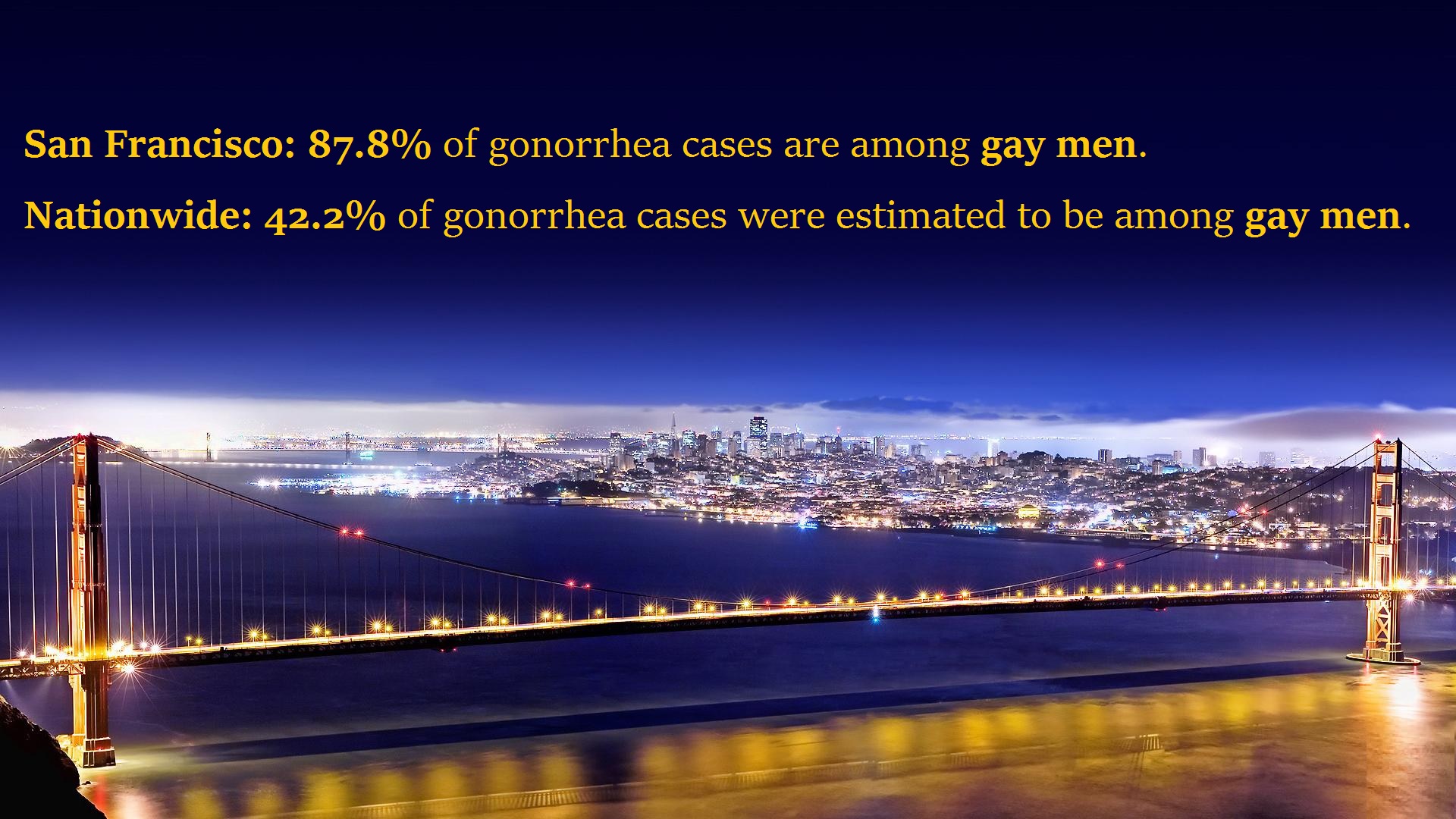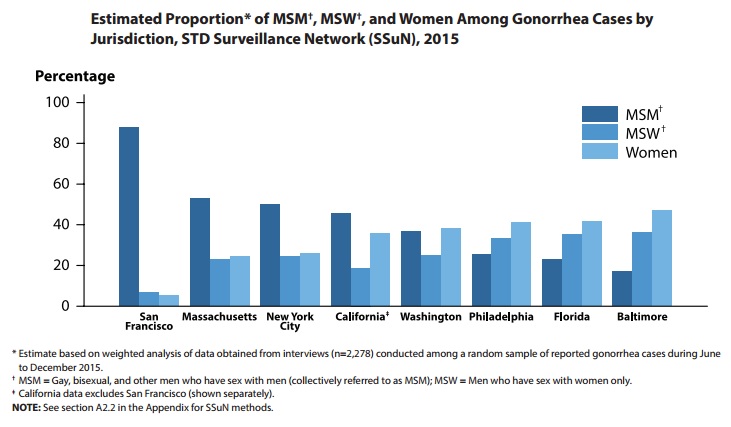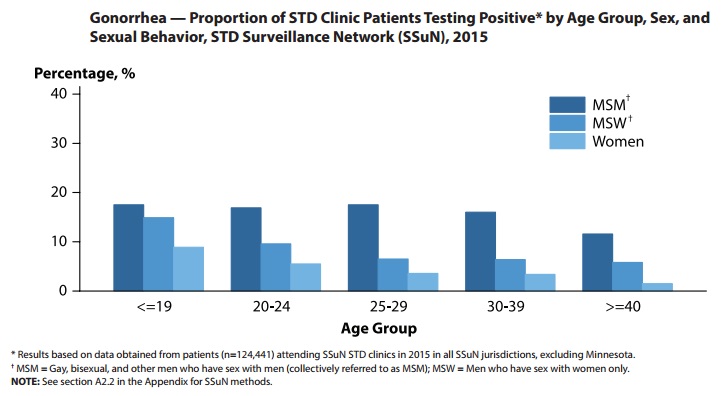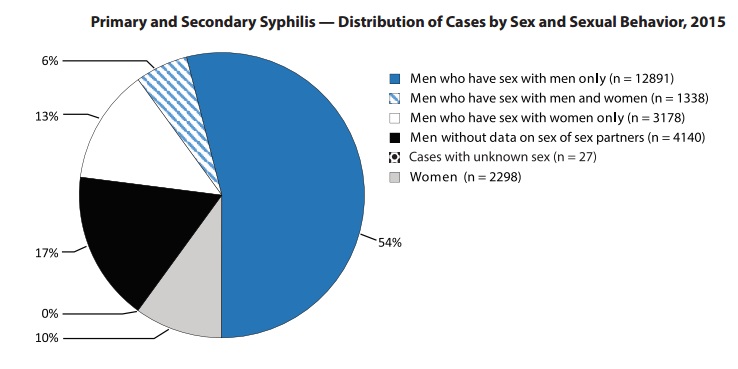Gay, bisexual, and other men who have sex with men (collectively referred to as MSM) are at increased risk for STDs, including antimicrobial resistant gonorrhea, when compared to women and exclusively heterosexual men. Because STDs, and the behaviors associated with acquiring them, increase the likelihood of acquiring and transmitting HIV infection, STD incidence among MSM may also be an indicator of higher risk for subsequent HIV infection.
During 2000–2015, the rise in the P&S syphilis rate was primarily attributable to increased cases among men and, specifically, among MSM. In 2015, men accounted for over 90% of all cases of P&S syphilis. Of those male cases for whom sex of sex partner was known, 81.7% were MSM.
The estimated burden of disease [gonorrhea] represented by MSM, men who have sex with women only (MSW), and women varied substantially across collaborating sites. San Francisco had the highest proportion of estimated MSM cases (87.8 %).
Across all SSuN collaborating jurisdictions in 2015, 42.2% of gonorrhea cases were estimated to be among MSM, 25.4% among MSW, and 32.4% among women.
In 2015, 22.3% of GISP isolates were resistant to ciprofloxacin. Among isolates from MSM, 32.1% were resistant; 16.4% of isolates from MSW exhibited ciprofloxacin resistance.
The estimated rate-ratio of MSM to female and MSM to heterosexual males during the study period ranged from 10.7 to 13.9 demonstrating a substantial and increasing inequality in the burden of disease [gonorrhea] between MSM and heterosexuals.
Overall, the proportion of isolates from MSM in selected STD clinics from GISP sentinel sites has increased steadily, from 3.9% in 1989 to 38.1% in 2015. GISP has demonstrated that gonococcal isolates from MSM are more likely to exhibit antimicrobial resistance than isolates from MSW.
Link to CDC report:
https://www.cdc.gov/std/stats15/std-surveillance-2015-print.pdf









In view of P. Francis’ liberal theology, do you know if he is changing the mandate of the COURAGE Apostolate?
With the departure of Father Paul Check and in light of PF’s highly controversial Amoris Laetitia, I am concerned about the continuance of this much needed ministry. The world sure needs the presence of someone like Father Check.